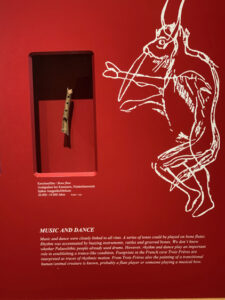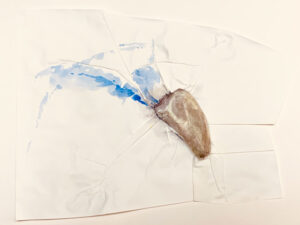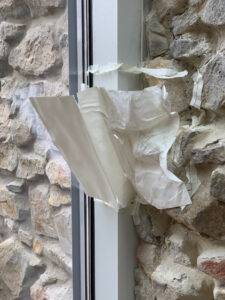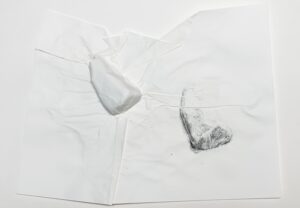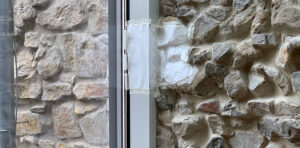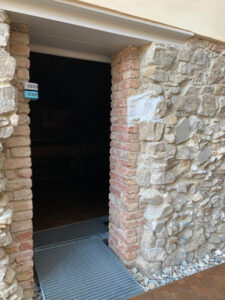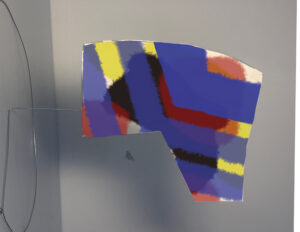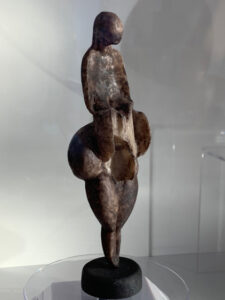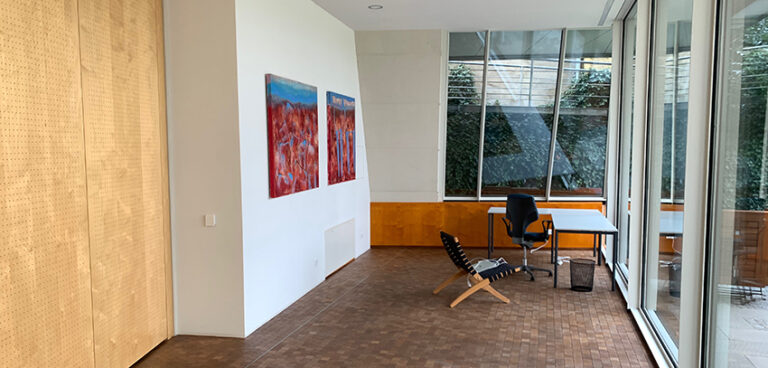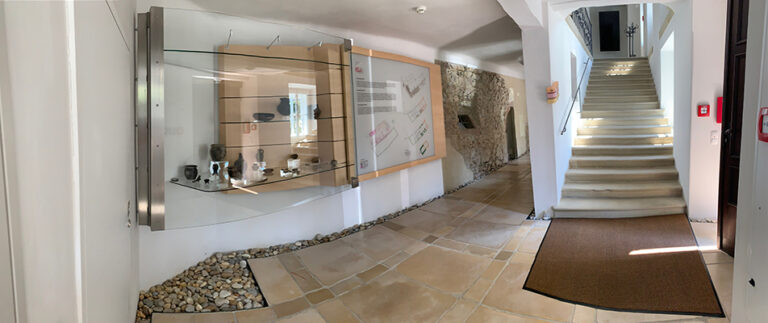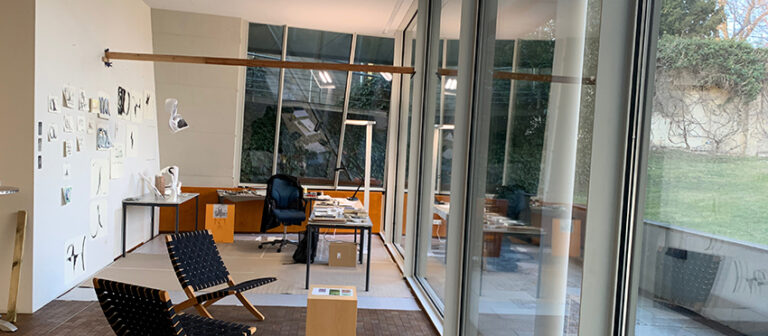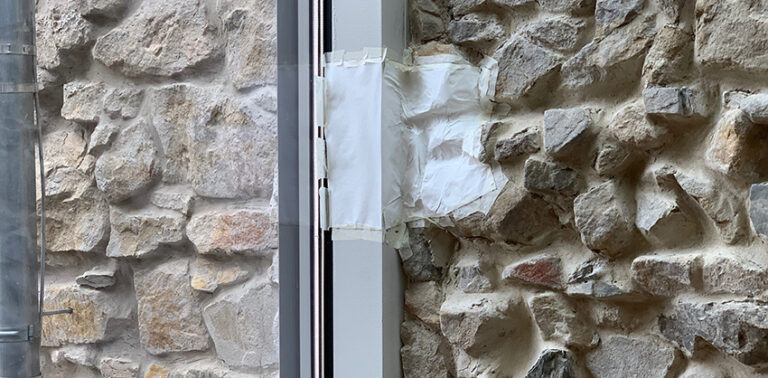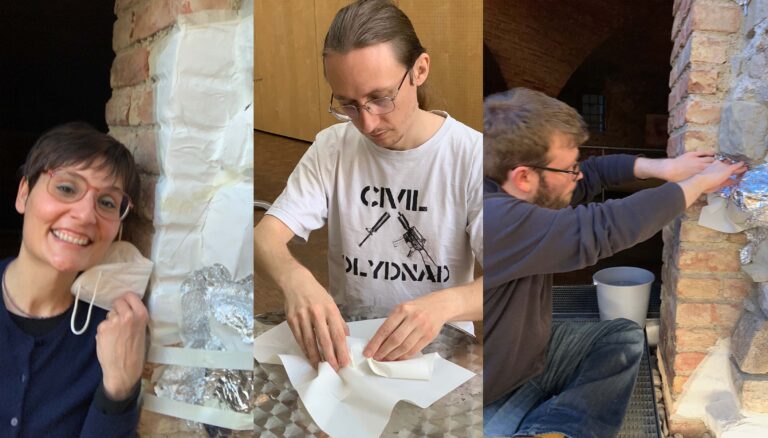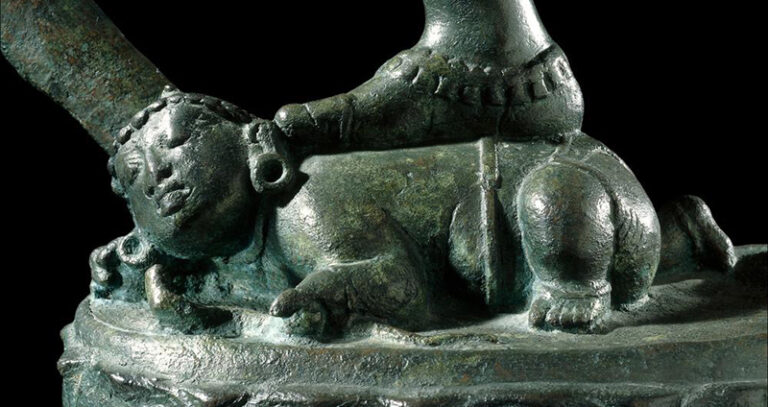Week 5: February 13 - 19
Group activities
Put in images of interviews, close up of stones in border, stones in light
Images of neolithic items in case
Focus on stones and paper wrapping in studio
Marina’s Talk
OBI -Sticks? Next week?
Some conversations:
Notes from Fellows
Questions:
How is this transformation of the public space changing things? Me the Fellows? Staff?
Which wall to continue ‘mapping’?Or doorway?
Neolithic history below my feet in the studio corner.
Experiments:
Experiments: Sones. Stones and paper , stones, inside paper, under paper
Fastening paper to stone wall
Tinfoil and tape
The boundary outline left by the tape.
The evidence of displacement?
Drawing thresholds. Watercolor
Color added to process? Charcoal? Rubbing Paper?
Coming up- which weeks did these happen? :
Inviting fellows to put on paper?
Reasons for this choice
the advent of stone and paper WITH fellows.
Shvia/Apasmara
Octavia Butler


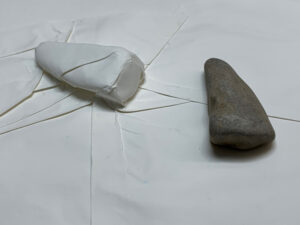
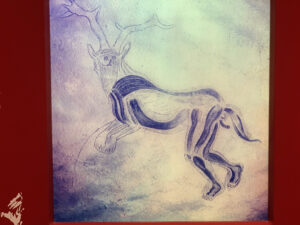
The small loose-stone border that forms a border transition between the wood floor of the new building and 14th cent foundation became a starting point for interacting with the space. The hand sized water-rounded stones are inviting to the touch and are a link to the glaciers that once filled the Danube River basin and all these valleys.
Picking them up and playing with them led to wetting a sheet of paper and wrapping the stone. When dried the ‘paper stone’ sheet records the shape and contours. I began to see the A3 paper I was using a unit of measurement and wrapped the same stone several times.
What would it mean to observe and record the details of the stone on the paper-stone? What about adding color and environmental details? These experiments continued for a another day and then the same method, by natural extension of measuring and recording principle, was brought to the mortared 14th cent wall where it met the glass of the atrium.
The location by the window would not allow for interaction, but the doorway to the adjacent vaulted space and the Cantinetta where everyone passes for meals and gatherings seemed right. As a doorway it connects the old and new building architectures. The low, dark, chthonic brick vaults built above Neolithic dwelling sites, which exactly parallels the new sky-lit clerestory atrium with it’s flying bridges felt like a symbolic juncture – a place to imagine a threshold of unknowing.
Drawing in Procreate on images of the Atrium I began to imagine the molded units of paper that collectively might suggest a liminal sort of ‘threshold’. It could be suspended from above somehow and be close to but not touch the ground.
Now that I have come to know most of the fellows I have begun to invite them to participate in creating certain elements. Briefly- my project involves using wet paper and molding it around the foundation rocks, bricks and stones that make up one of the old doorways. The sheet of paper acts as my measurement standard and page by page maps the architecture. Starting next week, individual fellows will work with me to soak the paper and mold it without tearing around a portion of the doorway shapes. This takes some patience, but the action requires maintaining physical contact with each rock surface indentation and erratically angled rocks somewhat in the fashion of a blind person feeling the features of a person’s face. The wet paper wants to fall and has to be encouraged to pleat and compress its sheetlike form in new ways. Tape and tinfoil assist somewhat and the perfectly-imperfect wrapping-mapping of this second skin eventually bonds, conforms and remains suspended. It will be interesting to see how each person interacts with this curious process
.
Next week:
xxxx
